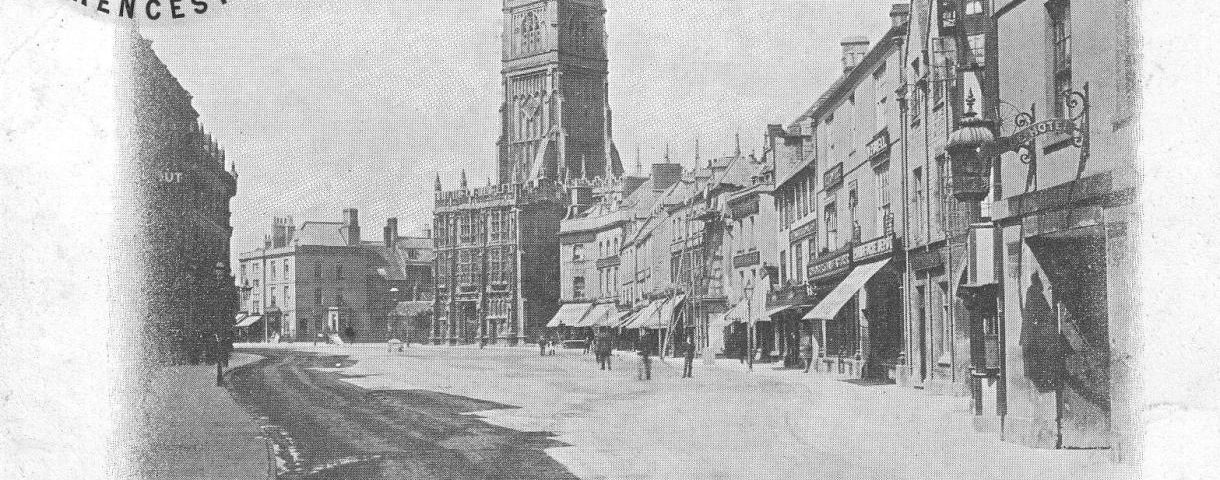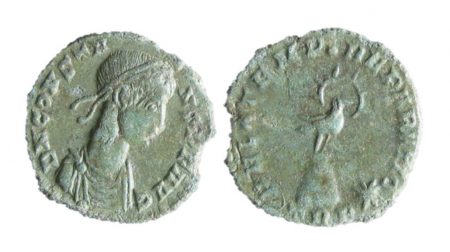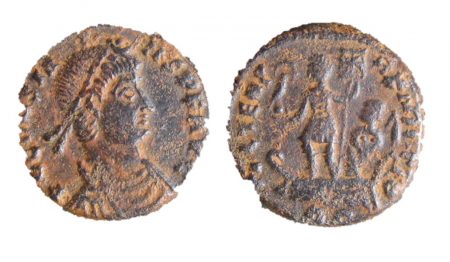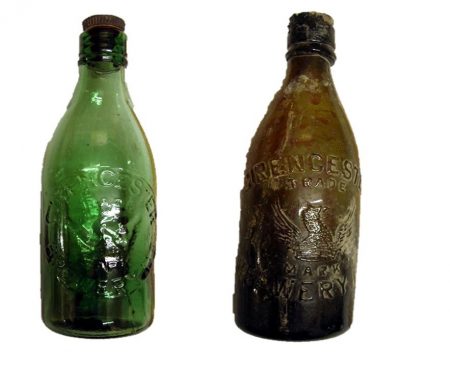Our guest blogger Emily, a Museum Studies M.A. student at the University of Leicester, takes a look at when the phoenix was first used as a symbol of Cirencester.
A phoenix is a mythical creature originating from several cultures. In Greek and Roman tales phoenixes gave off light, lived in the Arabian desert, and feasted on balsam and frankincense. These birds lived for five hundred years at a time, and when one died a new bird would emerge from its body. In Persian mythology the phoenix is said to burst into flames at the end of its life, and rise again from the ashes. Most recently the image of the phoenix was popularised in J.K. Rowling’s Harry Potter series through Professor Dumbledore’s companion Fawkes the Phoenix.
Phoenixes have appeared as a symbol of Cirencester since at least the seventeenth century, and now lend their image not only to Cirencester’s annual music festival, but also to several local businesses, and the Cirencester Town Council’s crest. (Note also the Jupiter column capital, on display at the Corinium Museum).
It is uncertain how the phoenix came to be associated with Cirencester. It might have been in reference to Elizabeth I, who adopted the symbol of the phoenix to celebrate her recovery from smallpox. Alternatively, the phoenix could symbolise Cirencester’s recovery after it was sacked by the Saxons in 577 AD.
There are several representations of phoenixes in the Corinium Museum’s collections, although the vast majority of them predate the town’s association with the bird. The Roman Emperor Constans, who reigned from 337-350 AD, used the symbol of the phoenix on much of his coinage. Constans, the son of the Emperor Constantine, inherited a third of the Roman Empire upon the death of his father. The other two thirds were given over to his two brothers. His brother Constantine II inherited Spain, Gaul, and Britain, but was defeated when he tried to take over Constans’ share in Italy, giving Constans control of Britain. Constans visited the isles in 342 AD and was the last legitimate Roman Emperor to do so.
The coin above was minted in Trier, and depicts the Emperor Constans on the face with the description D(OMINUS) N(OSTER) CONSTANS P(IUS) F(ELIX) AUG(USTUS), which translates to ‘Our Lord, Constans, dutiful and wise, Augustus’. On the reverse is a phoenix standing on a pyre, giving off rays of light, with the message FEL(ICIUM) TEMP(ORUM) REPARATIO, which means ‘Restoration of happy times’. It was found on the site of a Romano-British settlement in Kingscote, Gloucestershire, in 1973-75.
This coin, found at Claydon Pike, Gloucestershire, in 1981-1984, also depicts Constans and comes from the FEL TEMP REPARATIO series. On the reverse of coins of this design, however, Constans is depicted standing on a ship holding a phoenix atop a globe. It has been suggested that this image commemorates Constans’ sea voyage when he visited Britain.
Phoenixes next appear in the Corinium Museum collection on trade tokens, like this copper alloy Cirencester farthing from 1668. In the seventeenth century people needed coinage which was smaller in value than a penny. However, no values that low were being officially minted. An act of parliament in 1649 allowed certain towns, and eventually certain merchants, to produce tokens worth a half or quarter penny. These tokens cost very little to make, meaning that merchants were making a profit by producing them. As a result the practice was ended by Charles II in 1672, and farthings began to be produced as official coinage.
The phoenix continued to be associated with commerce in Cirencester, and was carved above the first floor windows of the Corn Hall Buildings, built in 1863 on the site of the old wool market. The Corn Hall was built during a period when Cirencester’s previously prosperous wool industry had gone into decline, and marks a shift towards the farming of crops alongside livestock in Gloucestershire.
For the most part, any later occurrences of the phoenix image in the collections are linked to local businesses, such as these bottles marked Cirencester Brewery Ltd (above), or are souvenirs of visits to the town, such as this postcard and ceramic candle holder (below).
The phoenix, therefore, has been an important symbol for centuries in Cirencester, and it still remains a prominent image around the town, in local businesses, and even on the Mayor’s Chain. While you’re enjoying the Phoenix Festival this weekend, spare a thought for what the phoenix means to Cirencester, and what it might mean in the future!
This blog was written by Emily Tilley, a Museum Studies M.A. student at the University of Leicester.


















